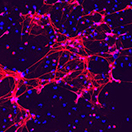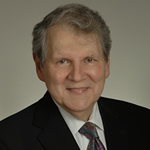SPOTLIGHT
Letter from Dr. Stephen I. Katz: The NIH Clinical Center—The "House of Hope"
Dear Colleagues,
The main National Institutes of Health (NIH) campus, located in Bethesda, Maryland, is home to thousands of scientists spread throughout more than 50 buildings. Most prominent is the Clinical Center, the world’s largest hospital dedicated to clinical research. Known as Building 10, some refer to it as the "House of Hope." It’s been the birthplace of many "firsts": cancer patients received the first chemotherapy to treat tumors, scientists performed the first human gene therapy tests, surgeons first successfully replaced the heart’s mitral valve and researchers found early success with the first anti-viral drug for HIV/AIDS.
Image: Stephen I. Katz, M.D., Ph.D.
NEWS
New Application Appendix Policy Effective January 25, 2018
We are asking NIAMS grantees to pay close attention to NIH grant notice NOT-OD-17-098, which notifies the research community that on or after January 25, 2018, clinical trial application materials will no longer be allowed in an Appendix unless specifically stated as required in the funding opportunity announcement. This notice further clarifies the types of Appendix materials allowable after this date.
NIH Posts Revised Estimates for FY 2017 Categorical Spending
The NIH has posted revised estimates for fiscal year (FY) 2017’s "Estimates of Funding for Various Research, Condition, and Disease Categories (RCDC)" for 282 research disease areas. The updated data account for enacted appropriations’ funding levels.
Immune Reaction at Mucosal Sites Signals Rheumatoid Arthritis Initiation
Distinct changes to the immune system precede the onset of rheumatoid arthritis (RA), according to a new study funded in part by the NIAMS. The data revealed elevated levels of an antibody-producing cell type found in mucosal areas such as the mouth, lungs and intestinal tract in people at high risk of developing the disease. The findings represent a step toward understanding how RA begins and may lead to novel strategies for halting its progression.
Photo credit: Rich Clark, NIAMS.
Genetic Evidence Separates Systemic Juvenile Idiopathic Arthritis From Other Parts of Juvenile Idiopathic Arthritis Family
One form of juvenile idiopathic arthritis may need to be reclassified based on the results of a research effort led by Michael Ombrello, M.D., head of the Translational Genetics and Genomics Unit in the Intramural Research Program at the NIAMS. Genetic analysis suggests that systemic juvenile idiopathic arthritis is distinct from the other forms of juvenile idiopathic arthritis and will require a different approach to finding treatment options.
Image: Researchers believe a form of juvenile idiopathic arthritis should be treated as an autoinflammatory disease, not as an autoimmune condition.
Photo credit: Shutterstock.
Genetically Modified Skin Grafts Show Promise for Treating Epidermolysis Bullosa
Researchers, supported in part by the NIAMS, have shown early success creating genetically modified skin tissue to graft onto patients with a severe form of epidermolysis bullosa (EB). Stanford University Medical Center scientists conducted a phase 1 clinical trial of four adult patients who have the inherited disease, recessive dystrophic EB, which causes extensive, painful blisters and skin wounds.
Image: The photo on the far right shows the presence of type VII collagen in skin after gene therapy, compared to untreated skin on the left.
Photo credit: M. Peter Marinkovich, M.D., and Jean Y. Tang, M.D., Ph.D., Stanford University.
NIAMS Video Abstract: Researchers Discover BACH2-Related Genetic Disorder

Behdad Afzali, Ph.D., a visiting researcher in the Molecular Immunology and Inflammation Branch in the NIAMS’ Intramural Research Program, discusses how an international team, including researchers from the NIAMS and the National Institute of Allergy and Infectious Diseases (NIAID), discovered a BACH2-related genetic disorder called BRIDA syndrome.
Video credit: Greg Lavine, NIAMS.
FNIH Biomarkers Consortium Launches Study To Identify Cardiovascular Risk in Rheumatoid Arthritis Patients
Working with NIAMS-funded infrastructure, patients and data from the multicenter, randomized clinical trial called TARGET (Treatments Against RA and Effects on FDG-PET/CT), the Foundation for the National Institutes of Health (FNIH) Biomarkers Consortium has launched a study—the TARGET Biomarkers Study—to identify biological markers (biomarkers) in the blood that will measure a rheumatoid arthritis (RA) patient’s increased risk for cardiovascular disease.
Yoga Eases Moderate-to-Severe Chronic Low Back Pain
Results of a study funded by the NIH’s National Center for Complementary and Integrative Health (NCCIH) found that yoga was as effective as standard physical therapy for treating moderate-to-severe chronic low back pain in people in underserved communities. The findings suggest that a structured yoga program may be an alternative to physical therapy for people with chronic low back pain, depending on individual preferences, availability and cost.
Image: Certain yoga poses, under proper supervision, may help reduce chronic low back pain and improve function.
Photo credit: Moodboard/Thinkstock.
NIH-Funded Team Uses Smartphone Data in Global Study of Physical Activity
Using a larger dataset than for any previous human movement study, NIH-funded researchers have tracked physical activity by population for more than 100 countries. Their research follows on a recent estimate that more than 5 million people die each year from causes associated with inactivity. The NIH’s National Institute of Biomedical Imaging and Bioengineering (NIBIB) partly funded this work.
Image: Smartphone data from 717,527 individuals across 111 countries reveal variability in physical activity around the world.
Photo credit: Tim Althoff, Stanford University.
FDA Clears Expanded Use of Cooling Cap To Reduce Hair Loss During Chemotherapy
The U.S. Food and Drug Administration (FDA) cleared the expanded use of a cooling cap, DigniCap Cooling System, to reduce hair loss (alopecia) during chemotherapy. This is the first cooling cap cleared by the agency for use in cancer patients with solid tumors.
FDA Unveils Plan To Eliminate Orphan Designation Backlog
The FDA unveiled the Orphan Drug Modernization Plan [PDF – 109 KB], designed to eliminate the agency’s existing orphan designation request backlog and ensure timely response to all new requests for designation with firm deadlines.
FDA Tackles Drug Competition To Improve Patient Access
The FDA announced steps to increase market competition for prescription drugs and to facilitate entry of lower-cost alternatives. The steps include a list of off-patent, off-exclusivity branded drugs without approved generics [PDF – 181 KB], and a new policy to expedite the review of generic drug applications [PDF – 107 KB] where competition is limited.
HHS Requests Public Comments for Healthy People 2030
The U.S. Department of Health and Human Services (HHS) is soliciting written comments on the proposed framework for Healthy People 2030. The Healthy People initiative provides 10-year national objectives for improving the health of all Americans. Members of the public—including individuals, stakeholders and organizations—are invited to provide comments on the Healthy People 2030 framework [PDF – 629 KB], including its vision, mission, foundational principles, plan of action and overarching goals. This public comment period is open through September 29, 2017.
RESOURCES
Spotlight on Scientific Imagery: Neutrophil Extracellular Traps

Neutrophil extracellular traps (NETs) are web-like structures that immune cells called neutrophils use to ensnare and kill microbes such as bacteria or fungi. NETs are shown as DNA (blue) forming a complex with the granule protein neutrophil elastase (red). Normally, NETs are released in response to invading pathogens, but have also been associated with autoimmune diseases. For this image, NETS were induced by levamisole, a drug that can trigger autoimmunity.
Photo credit: Mariana Kaplan, M.D., Chief, NIAMS Systemic Autoimmunity Branch.
EVENTS
September NIAMS Advisory Council Meeting
The NIAMS Advisory Council Meeting will be held September 6, 2017, in Building 31, 6th Floor, C Wing, Conference Room 6, NIH Campus. A meeting agenda will be posted as soon as it is available. This Council meeting will be available for live viewing via the NIH videocasting service as well.

Discovery Channel Documentary: “First in Human: The Trials of Building 10”
Episode 3: August 24, 2017, 9 p.m. ET/PT
Airs on the Discovery Channel
Details available here.
FDA Public Meeting: Patient-Focused Drug Development for Alopecia Areata
September 11, 2017
1 p.m. to 5 p.m.
FDA White Oak Campus, Silver Spring, Maryland
Cost: Free
Additional information is available here.
NIH Research Festival: A Celebration of Intramural Science
September 13–15, 2017
The event is videocast.
Additional information is available here.
NIH Director’s Wednesday Afternoon Lecture Series
The 2017–2018 Wednesday Afternoon Lecture Series (WALS) starts in September. The schedule will be posted on the WALS website.
NIH Science Lectures and Events Available via Internet
The NIH hosts a number of science seminars and events that are available online through real-time streaming video (videocast). The NIH calendar notes these videocast events with a video icon ![]() .
.







